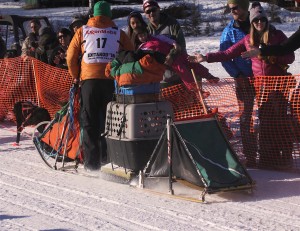
Iditarod mushers are preparing for a particularly bumpy, brutal ride on the trail’s first leg on icy terrain with little snow. Many have modified their run strategies, and adjusted one of the main tools for keeping a competitive edge: their sleds. Many mushers say durability is trumping speed this year as they expect to take a beating along the early trail.
Rookie Tim Pappas is running a fast, young puppy team, and made the decision to ride a heavier sled because it stands the best chance of not getting pulverized on ice and rocks.
“I can give the sled a little bit more abuse, it sounds like it’s gonna be kinda a rough trail this year, so I think it’s gonna be the right choice,” Pappas said.
Originally, he’d planned on switching sleds further along the trail, to one with wooden runners that would have been lighter and faster. But given that conditions through much of the race are looking bare and rough, he decided to stick with his beater.
It’s a design crafted in-house at Martin Buser’s Happy Trails Kennel, where Pappas is a handler. And Buser himself is opting for the same strategy: runners made from a heavy plastic composite that puts durability ahead of speed.
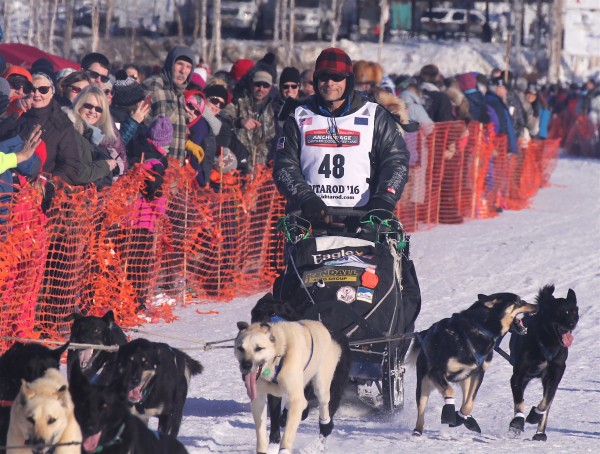
“I know it adds a bit of weight, it probably adds five or eight pounds to the entire rig. But it also guarantees you virtual success going through some of the rough sections because they literally cannot break,” Buser said.
Buser says he isn’t racing to win, just finish.
“The joke is, this year’s motto is, ‘How slow can you go,’” Buser said.
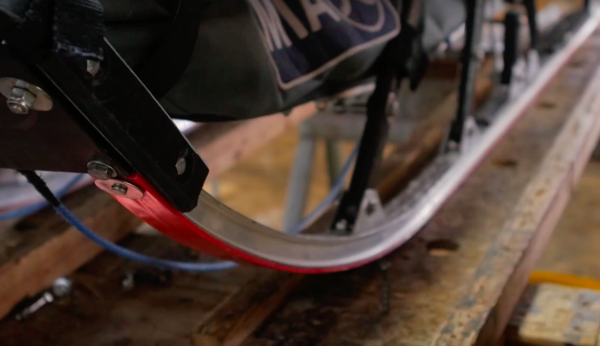
Other mushers are building slow into their strategy, too. Or simply looking for ways to tamper their teams during a dicey, technical decent out of the Alaska Range and toward flatter trail conditions. Lance Mackey is spending the first part of the race on a bigger sled designed for the Yukon Quest.
“It’s indestructible, and if anybody can break it it’d be me,” Mackey said. “It’s been tested and abused and it’s still functioning. I’m taking it to Nikolai to confirm that I’ll have a dog team when I get to Nikolai.”
Mackey is taking other steps to budget his dogs’ energy. He modified his gang-line and harness system to give the team less pulling power. Then, from Nikolai onward: vroom.
“You get to Nikolai with a dog team and then you can race,” Mackey said.
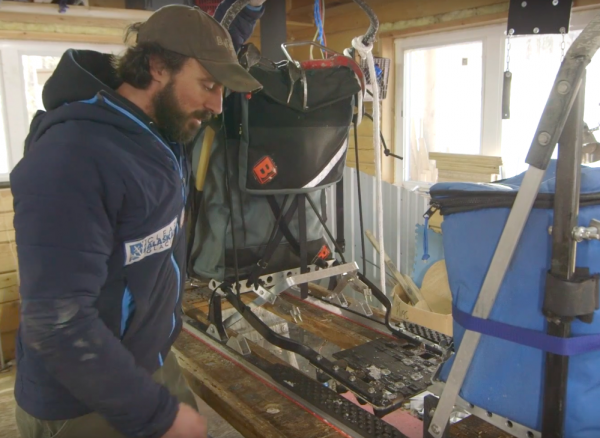
Another strategy for limiting pulling capacity in this first leg is just running fewer dogs on the line, as if you’re taking cylinders out of an engine. Race veteran Kelly Maixner is running an aggressive schedule for a top finish, but he left the start in Willow with a multi-part sled that included, among other things, a hip-high plastic dog crate.
“I’ll carry up to four dogs, maybe even more depending on what’s going on out there, just because, I’d rather be carrying dogs than slamming on my brakes,” Maixner said.
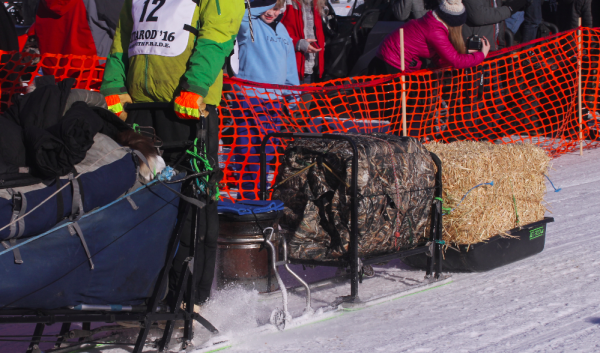
While many of the sleds departing Willow Lake had a caboose attached, plenty of mushers left with short, unburdened sleds. Suggesting they’ve either dropped equipment at checkpoints further ahead, or are in for a fast ride to Rohn.
Zachariah Hughes reports on city & state politics, arts & culture, drugs, and military affairs in Anchorage and South Central Alaska.
@ZachHughesAK About Zachariah
Eric is a video producer for Alaska's Energy Desk. While he never learned the proper way to ride a horse while growing up in Wyoming, he did manage to become a proficient video cable wrangler thanks to a volunteer gig at Wyoming PBS. After graduating from Ithaca College with a Bachelors degree in Television-Radio Production, Eric spent a couple years traveling around Oregon and Washington as a Multimedia Producer for a regional newspaper company, covering everything from sand sculpting competitions to sled dog races. From there, he transitioned to a more stationary gig in Portland, where he developed and managed a team of video editors at a startup news production company. The call of the road sent Eric north, where he’s happy to once again be producing video and audio in the field. Outside of work, Eric is hoping to spend as much time as he can exploring Alaska (it’s so close to Anchorage), climbing around on rocks, and perhaps finally learning how to ride a horse.
eketo (at) alaskapublic (dot) org | 907.550.8494 | About Eric




